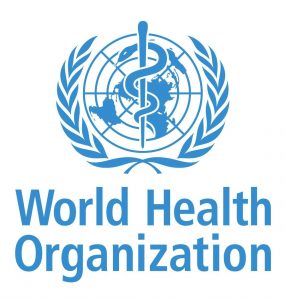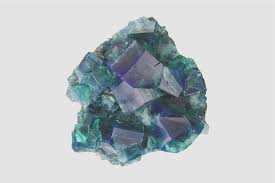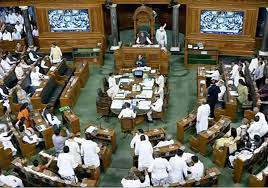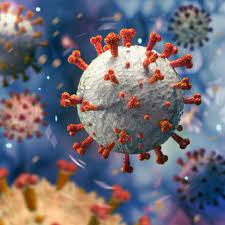Today’s Current Affairs: 26th Jul 2023 for UPSC IAS exams, State PSC exams, SSC CGL, State SSC, RRB, Railways, Banking Exam & IBPS, etc
Table of Contents
New Guidelines For HIV : WHO

The World Health Organization (WHO) released new guidance for HIV at the International AIDS Society Conference on HIV Science.
Key points of the guideline:
- It emphasizes the critical role of HIV viral suppression and undetectable virus levels in enhancing individual health and preventing transmission of the virus.
- Countries integrate Mpox (monkeypox) detection, prevention and care with existing and innovative HIV and sexually transmitted infection prevention and control programmes.
- People living with HIV who achieve an undetectable level of the virus through consistent use of antiretroviral therapy (ART) do not transmit HIV to their sexual partner(s) and are at low risk of vertically transmitting HIV to their children.
Silver Cockscomb:

The Soliga tribal community uses silver cockscomb, which is often considered to be a weed but has been discovered to have advantages.
- Silver cockscomb is a short-lived 50-60 cm-tall plant considered as a weed, that bears simple, spirally arranged leaves around the stem with pinkish or silky white flowers.
- In Karnataka’s Chamarajanagara district the silver cockscomb is referred to as anne soppu.
- Also known as lagos spinach which belongs to the Amaranthaceae family, which includes economically important plants like spinach (Spinacia oleracea), beetroot and quinoa.
- The plant is known as Celosia argentea, kurdu in Marathi and pannai keerai in Tamil.
- It grows well even on fallow land and in drought-like conditions.
- Its leaves have lower levels of oxalic acid and phytic acid.
- Soligas use it as a nutritious leafy green vegetable, as it is high in nutrients such as beta-carotene and folic acids, and have vitamin E, calcium and iron.
- It is frequently used in traditional Chinese and Indian medicine for treating eye diseases and ulcers.
- Soligas are an indigenous tribe of Karnataka,
- They reside in the peripheral forest areas near Biligiri Rangana Hills and Male Mahadeshwara in the Chamarajnagar district of Karnataka.
Fluoromix : New Way To Obtain Fluorine

Scientists from the University of Oxford have come up with a new way to obtain fluorine atoms, used to manufacture important chemical compounds used in industry and research, in a much safer and less energy-intensive way.
New procedure to obtain fluorine atoms
- To avoid hydrogen fluoride and to make the extraction process requires less energy, the researchers took inspiration from how the human body makes bones and teeth: through calcium phosphate biomineralization.
- They ground fluorspar in a ball-mill with potassium phosphate.
- While fluorine is very reactive, calcium atoms prefer phosphorus even more, so the milling created calcium phosphate and another compound with fluorine atoms. They called the latter Fluoromix.
- When Fluoromix was reacted with organic compounds, it could create around 50 fluorochemicals with up to 98% yield.
- Fluorine comes from a calcium salt called calcium fluoride, or fluorspar.
- Fluorspar is mined and then treated with sulphuric acid at a high temperature to release hydrogen fluoride (HF).
- Hydrogen fluoride is then made to react with other compounds to create fluorochemicals.
- Fluorine is a highly reactive element used to make fluorochemicals,
- It is used to produce plastics, agrochemicals, lithium-ion batteries, and drugs.
- A major downside of this process is that HF is an extremely poisonous and corrosive liquid that irritates the eyes and respiratory tract even at low concentrations.
- It also requires special transportation and storage
- Hydrogen fluoride spills have occurred numerous times in the last decades, sometimes with fatal accidents and detrimental environmental effects.
Meri Maati Mera Desh Campaign:

The Indian government has initiated the ‘Meri Maati Mera Desh’ campaign as part of the ‘Azadi Ka Amrit Mahotsav’ celebration of 75 years of Independence.
- Soil collected from various parts of the country will be used to develop the Amrit Vatika Garden along the Kartavya Path in Delhi.
- Events planned at different levels, from panchayat and village to state and national levels.
- Shilaphalakam ,memorial plaque with the names of bravehearts who made the supreme sacrifice to be installed.
- Pledge taken by people affirming their commitment to the country.
- Planting 75 saplings of indigenous species in every gram panchayat or village under ‘Vasudha Vandhan’.
- ‘Veeron Ka Vandan’ to felicitate freedom fighters and families of deceased freedom fighters.
Ludwigia peruviana : Significant Threat To Elephant Habitats

An Invasive weed called Ludwigia peruviana is posing a significant threat to elephant habitats and foraging areas in Valparai, Tamil Nadu.
- The invasion of Ludwigia Peruviana poses a significant threat to elephant habitats, disrupting the growth of essential food sources for elephants and other plant-eating animals.
- The spread of this invasive weed also impacts the overall biodiversity of invaded areas, leading to the loss of native plant species and potentially forcing wildlife to move to other areas, resulting in negative interactions with humans.
- Ludwigia Peruviana, also known as primrose willow, is originally native to Central and South America.
- It is an aquatic plant that was likely introduced as an ornamental species due to its attractive pale yellowish flowers.
- However, its introduction to new regions has resulted in it becoming an invasive weed, causing ecological disruptions in various swampy areas worldwide.
- Ludwigia Peruviana grows relatively tall, reaching a height of about 12 feet.
- As an aquatic plant, it thrives in wetlands and water bodies.
- It grows faster than many other harmful weeds, and the pre-monsoon temperature and monsoon rains contribute to its rapid growth and spread.
India Energy Security Scenarios (IESS) 2047 V3.0:

NITI Aayog unveiled the latest version of the India Energy Security Scenarios (IESS) 2047 V3.0, an open-source tool designed to evaluate the integrated impact of various green energy policies of the Government of India.
- The baseline for the tool has been set at 2020 and is continually calibrated up to 2022, ensuring the accuracy of its predictions.
- NITI Aayog also released the India Climate Energy Dashboard (ICED) 3.0.
- ICED is the country’s one-stop platform for near real-time data on the energy sector, climate, and related economic datasets based on government published sources.
Key Features and Functionality of IESS 2047 V3.0:
- This tool assesses the demand and supply of energy in the country, considering policies related to alternative energy resources like Green Hydrogen Mission, Renewable Purchase Obligations, PM-KUSUM, Offshore wind strategy, among others.
- By analyzing emissions, cost, land, and water requirements up to 2047, IESS 2047 aims to steer India towards a sustainable and net-zero energy future.
- The tool is open-source, easily downloadable, and user-friendly, encouraging accessibility and engagement from researchers, think tanks, and the public.
- IESS 2047 allows users to generate personalized pathways, tailored to specific factors like industry, services, agriculture, population, urbanization, and end-use energy demand.
- By providing reliable estimates of the country’s energy needs, IESS 2047 helps reduce India’s reliance on external agencies.
PSLV-C56 : Carrying Singapore’s DS-SAR Satellite

The Indian Space Research Organisation (ISRO) announced that the launch of the PSLV-C56 carrying Singapore’s DS-SAR satellite will take place on July 30.
- The PSLV-C56 carrying DS-SAR satellite along with six co-passengers will be launched from the Satish Dhawan Space Centre in Sriharikota.
- It is configured in its core-alone mode, similar to that of C55.
- It would launch DS-SAR, a 360 kg satellite into a Near-equatorial Orbit (NEO) at 5 degrees inclination and 535 km altitude.
- DS-SAR satellite is developed under a partnership between DSTA (representing the Government of Singapore) and ST Engineering.
- It will be used to support the satellite imagery requirements of various agencies within the Government of Singapore.
- ST Engineering will use it for multi-modal and higher responsiveness imagery and geospatial services for their commercial customers.
- It carries a Synthetic Aperture Radar (SAR) payload developed by Israel Aerospace Industries (IAI).
- This allows the DS-SAR to provide for all-weather day and night coverage and is capable of imaging at 1m resolution at full polarimetry.
International Seabed Authority : Roadmap

The International Seabed Authority’s member nations recently agreed on a two-year roadmap for the adoption of deep-sea mining regulations.
- International Seabed Authority (ISA) is an international organization established in 1994 to regulate mining and related activities in the international seabed beyond national jurisdiction, an area that includes most of the world’s oceans.
- The ISA came into existence upon the entry into force of the 1982 United Nations Convention on the Law of the Sea (UNCLOS), which codified international law regarding territorial waters, sea lanes, and ocean resources.
- Headquarters: Kingston, Jamaica
- As of May 2023, ISA has 169 Members, including 168 Member States and the European Union.
- The ISA is responsible for granting licenses and regulating activities related to the exploration and exploitation of mineral resources in the international seabed.
- Its ensures that these activities are carried out in a manner that protects the marine environment and promotes the equitable and efficient utilization of resources.
- The supreme authority of the ISA is the assembly, in which all ISA members are represented.
- The assembly sets general policies, establishes budgets, and elects a 36-member council, which serves as the ISA’s executive authority.
- The council approves contracts with private corporations and government entities for exploration and mining in specified areas of the international seabed.
- The council oversees implementation of the seabed provisions of the UNCLOS and establishes provisional rules and procedures (subject to approval by the assembly) by which the ISA exercises its regulatory authority.
- The secretary-general of the ISA is nominated by the council and is elected by the assembly to a four-year term.
National Dental Commission Bill, 2023:

The government recently introduced the National Dental Commission Bill, 2023, in the Lok Sabha.
National Dental Commission Bill, 2023:
- The Bill seeks to repeal the Dentists Act, of 1948.
- The bill also aims to make dental education affordable and make quality oral healthcare accessible.
- It seeks to replace the Dental Council of India with the National Dental Commission (NDC).
- National Dental Commission (NDC) will draft policies and maintain quality standards in dental education and the profession.
- The new commission will also regulate fees for 50% seats in private dental colleges.
- The composition of the NDC will be similar to that of the National Medical Commission (NMC), which had replaced the Medical Council of India.
- The head office of the National Dental Commission shall be at New Delhi and it will consist of a chairperson; eight ex officio members; and 24 part-time members.
- They will be appointed by the central government.
- Members of NMC, health ministry, AIIMS, New Delhi will be among the eight ex-officio members.
- Out of 24 part-time members, a total of 19 members will be appointed on rotational basis from amongst the nominees of the states and union territories for two years.
- Other five members who will be appointed for four years will include two dental faculties from any central or state or autonomous government institutes; three members who have special knowledge and professional experience in areas including management, law, medical ethics, health research, consumer or patient rights advocacy, science and technology and economics.
- According to Bill, the commission’s members will declare their assets and liabilities at the time of entering and demitting office and also declare all professional and commercial engagements.
Middle East Respiratory Syndrome : Confirmed Case In Abu Dhabi

The World Health Organisation (WHO) recently confirmed a case of the potentially fatal Middle East Respiratory Syndrome Coronavirus (MERS-CoV) in Abu Dhabi.
- MERS is a viral respiratory disease caused by the Middle East respiratory syndrome coronavirus (MERS‐CoV) that was first identified in Saudi Arabia in 2012.
- Coronaviruses are a large family of viruses that can cause diseases ranging from the common cold to Severe acute respiratory syndrome (SARS) and Coronavirus disease-2019.
- Typical MERS symptoms include fever, cough and shortness of breath.
- Pneumonia is common but not always present.
- Gastrointestinal symptoms, including diarrhoea, have also been reported.
- Fatality Rate: Approximately 35% of MERS cases reported to WHO have died.
- Prevention and Treatment:
- No vaccine or specific treatment is currently available.
- Treatment is supportive and based on the patient’s clinical condition.




